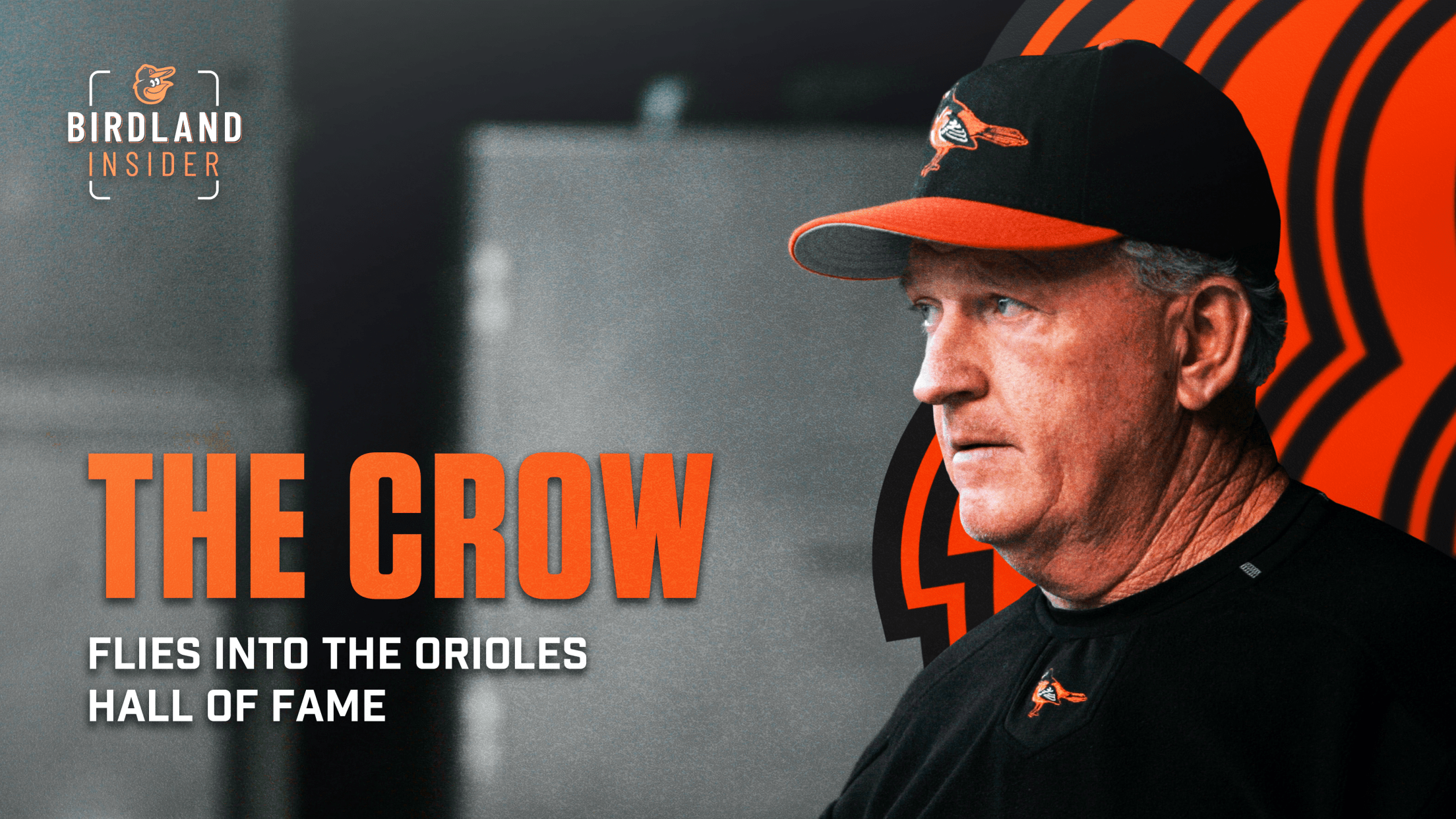
?The Crow Flies Into The Orioles Hall Of Fame
Terry Crowley*s Orioles career can be split into several parts.
There were his 12 years as a part-time first baseman/designated hitter, when he was known as ※the King of Swing§ and became one of the most feared pinch-hitters in baseball. His 108 pinch hits 每 79 of them with the Orioles 每 rank 13th all-time.
With the Orioles, from 1969 to *73 and *76 through *82, he batted .284 as a pinch-hitter, with five homers, 54 RBI and a .355 on-base percentage.
He played in 15 big league seasons, batting .250, but never appeared in more than 97 games. He averaged barely more than two plate appearances per game over 865 career games. All that time on the bench made him a keen observer of the hitting process.
※I spent so much time watching as a player,§ Crowley said, ※and guys would sometimes ask me for advice.§
Then there were his 16 seasons as the Orioles hitting coach, the second-longest coaching tenure in club history, when he helped assemble some of the best offenses in club history. The Orioles team records for batting average (.281 in 2004), doubles (322 in *08) and on-base percentage (.353 in *99) were all set while Crowley was batting coach. The top three team batting averages (and five of the top eight) came under him, as did seven of the top eight doubles marks, four of the top five hit totals and four of the top seven slugging marks.
Individuals established club marks that still stand in batting average (Melvin Mora, .340 in 2004), doubles (Brian Roberts, 56 in 2009) and hits (Miguel Tejada, 214 in 2006).
Crowley, who was the Orioles first designated hitter on April 6, 1973, spent two stints as Orioles hitting coach. After serving as a minor league hitting instructor in 1984, he was promoted to the big league club. He was here for four years, 1985-88, and returned to the club in 1999, coaching through the 2010 season. In between, he spent eight seasons as Minnesota*s hitting coach.
Even after stepping down from his coaching position, Crowley spent most nights for eight seasons watching and assessing minor leaguers at Aberdeen, Bowie and Frederick, providing tips and information to the player development department to help players improve and scouting other teams.
Explaining his coaching style, he said: ※If they*re good enough to get to this level, then they must be doing something right. Unless there*s something I see that absolutely prevents them from having success at this level, I*ll basically leave them alone and try to help them improve their own style, to improve on their own.
※I don*t think everyone could be a hitting instructor. People have to relate to other people. I feel I know a little about hitting and what I do know I can get across. I try to keep it simple,§ he said.
※If there*s one thing I pride myself on, it*s remembering that it looks very easy from where I sit and from the stands behind home plate. I try to never forget the times it was difficult for me in the batter*s box. I think, over the long haul, players appreciate that,§ said Crowley, who earned World Series rings as a player with the 1970 Orioles and 1975 Reds and another as a coach with the Twins in 1991.
※Hitting mechanics and drills are the same whether you*re working with a superstar who has hit a bump in the road and needs to get straightened out, or a kid hearing it for the first time#We*re going to be patient and work hard and hope for good things,§ he said.
It's especially apropos that he is entering the Orioles Hall of Fame with Nick Markakis, who developed a special relationship with Crowley from his rookie season in 2006.
※Not only was he helping me physically, but mentally he was putting good thoughts in my head.§ Markakis said at the time. ※If I had a bad game, he wouldn*t come to me and say, &You know, you did this wrong.* Since I*ve been up here, I*ve never heard him say something negative. He*s unbelievable in that way. He*s really done a lot for me.§
The Crow did it not just for Markakis, but for many hitters along the way.


